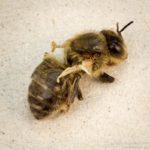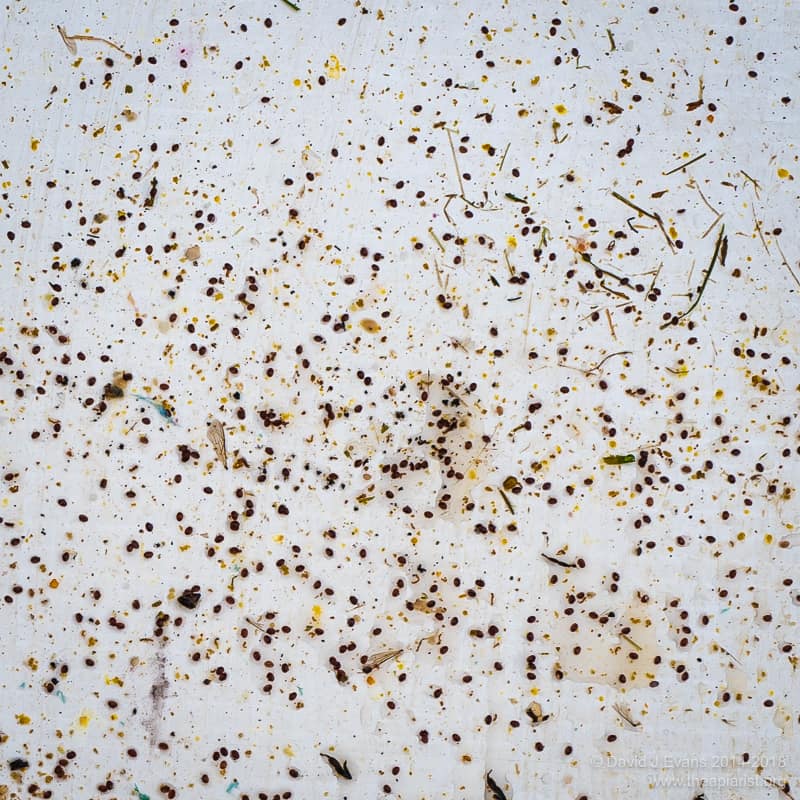Those pesky mites

DWV symptoms
If you haven’t yet treated your colonies to reduce Varroa levels before the winter arrives it may well be too late†. High Varroa levels are known to result in the transmission of virulent strains of deformed wing virus (DWV). These replicate to very high levels and reduce the lifespan of bees. If this happens to the ‘winter bees’ raised in late summer/early autumn there’s a significant chance that the colony will die during the winter.
Mite levels in most of my colonies have been very low this year. Partly due to thorough Varroa management in the 2015/16 winter (the only thing I can take credit for), partly due to the relative sparsity of beekeepers in Fife, partly due to the late Spring and consequent slow build-up of colonies and partly due to an extended mid-season brood break when requeening. Most colonies yielded only a small number of mites (<50) during and after a 3 x 5 day treatment regime (to be discussed in detail in a later post) by sublimation.
Infested arrivals
The low mite drop definitely wasn’t due to operator error or vaporiser malfunction. At the same time I treated a swarm that had moved into a bait hive in early June …
This is ~20% of the Varroa tray. Have a guess at the number of mites in this view only. Click on the image to read the full legend which includes the mite count.
The image above was taken on the 18th of September, a day or two after starting the second round of 3 x 5 day treatments. The colony really was riddled. When a colony swarms 35% of the mites in the colony leave with the swarm (or, in this case, arrives with it). For this reason the swarm was treated for mites shortly after it arrived in June. It did have a reasonably high mite load but subsequently built up very quickly and didn’t experience the mid-season brood break my other colonies benefitted from.
The colony now has an acceptable mite drop (<1 per day). Similar colonies are still rearing brood – I’ve not checked this one, but they are bringing in some pollen from somewhere – so there’s a possibility the majority of the remaining mites are tucked away in sealed cells. I’ll keep a close eye on this colony through the next few weeks and will be treating again midwinter to further reduce the parasite burden.
Treat ’em right
If you are treating this late in the season make sure you use a miticide that is appropriate for the conditions. Apiguard (a thymol-containing treatment) is almost certainly unsuitable unless you’re living in southern France as it needs a temperature of 15°C to be effective. MAQS has a recommended temperature minimum of 10°C which may be achievable.
Hard chemicals such as Apivar and Apistan can be used at lower temperatures but there’s little point in treating with Apistan unless you’re certain all your mites are sensitive. They almost certainly are not as Apistan/Bayvarol resistance is very widespread in the UK mite population. Just because you get an increased mite drop in the presence of Apistan does not mean treatment has been effective. Perhaps all you’ve done is killed the sensitive mites in the population, leaving the remainder untroubled. This is what’s known as a bad idea … both for your bees next season and for your neighbours.
† I’m posting this now due to the large number of searches for, and visits to, pages on use of Apiguard or other Varroa treatments. These are currently running second to ‘fondant‘ in one form or another.

Join the discussion ...